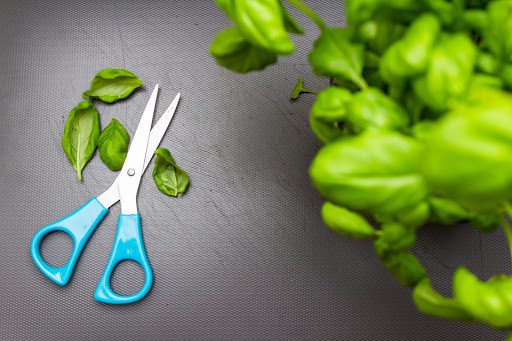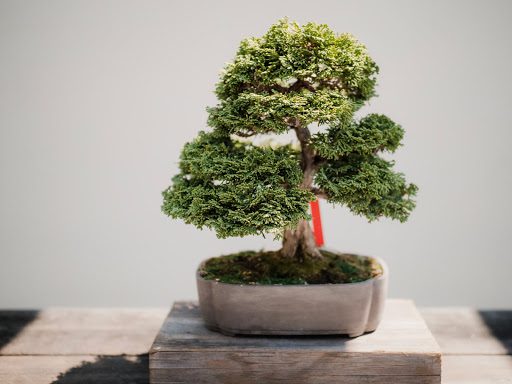Despite popular misconception, bonsai are not a specific species of tree. In fact, with the right care, nearly any type of tree can be grown as a bonsai. Intentionally restricting a young tree causes it to dwarf as it matures.
This is bonsai.
Since bonsai trees are genetically identical to their life-sized counterparts, caring for these miniature versions can get a little complicated. Naturally, they want to grow much larger—so the bonsai caretaker must train them to grow small.
How Do I Keep My Bonsai Tree Small?
Keeping your bonsai tree small comes down to two factors: small leaves and a small trunk/ branches. While there are numerous techniques to master both, a few key practices will keep you on the right track.
- Pruning: By cutting back new growth and shaping the canopy, you encourage smaller, denser growth at lower levels.
- Potting/root trimming: One of the key elements of bonsai is keeping your tree in a shallow container. This, along with regularly trimming the roots, restricts your tree’s growth.
- Leaf care: Achieving smaller leaves comes down to the type of tree you choose, the amount of sunlight your tree receives, and annual defoliation of some species.
While each tree has its own characteristics and needs, these three techniques will help you jump into the world of bonsai. Over time, you will gradually increase your knowledge and ability to train your tree to grow exactly the way you want it to.

1. Pruning
It’s a simple fact of nature: your tree wants to grow upwards. Pruning your tree helps keep it short and encourages denser foliage—producing a miniature canopy effect.
Maintenance Pruning
Maintenance pruning involves trimming small sticks and branches to maintain the shape of your tree. Because most new growth will concentrate at the top of the plant, pruning runaway pieces forces your tree to produce dense growth closer to the base of the plant.
Maintenance Pruning Coniferous Bonsai
While it’s advisable to use twig or branch cutting shears on deciduous trees, coniferous bonsai are more sensitive. Instead, consider pinching the stem off with your fingers rather than shears.
When to Maintenance Prune
The best time to maintenance prune is throughout the growing season. This period usually occurs from early spring to late fall
Structural Pruning
This method of pruning often intimidates new caretakers. Structural pruning keeps bonsai trees small by cutting off thicker branches. This also guides the appearance of your tree over time.
Structural Pruning Bonsai Trees for Beginners
- Trim branches close to the ground.
- Trim branches growing parallel with the trunk.
- Trim branches that cross other branches.
- Trim branches that are too thick on top.
When to Structurally Prune
All bonsai are different, but structural pruning should generally take place just before or right after the growing season (i.e., early spring or late autumn).2 Because structural pruning can be stressful on your plant, we recommend researching the specifics for your type of tree.

2. Potting and Root Cutting
Potting and root care are an essential part of keeping a bonsai tree small. Essentially, the roots are the engine of the tree. The more fuel they can take up, the faster the tree can grow. Strategic potting and root cutting restrict growth beneath the soil and limit the nutrients and water your tree can absorb.
When Do I Repot My Bonsai Tree?
You’ll know it’s time to repot your bonsai if you see roots poking through the drainage hole or crawling over the surface This means your plant has taken up all available space—and it’s time for some root care.
Repotting a Bonsai Tree for Beginners
- Remove the tree by pushing on the drainage hole. (At this point, your root growth should be so dense it pops right out.)
- Brush away dirt from the roots with a root rake or your fingers. Scrape in a radial pattern from the center outwards; this is gentlest on the tree.
- Once dirt and rocks are removed, spritz the roots with water to keep them moist.
- Trim the roots to maintain a radial shape, cutting away any pieces that are growing haphazardly.
- One you’ve cleaned and trimmed your roots, hold the bonsai inside your pot. Do the roots touch the pot’s outer edges? If so, trim the roots further.
- To repot, fill your pot partially with soil, place the tree inside, and cover the roots with more soil.

3. Growing Small Leaves
A bonsai with a small trunk and branches will look comedic with life-size foliage. The following techniques will help your tree grow miniature leaves.
Choosing the Right Species
It’s harder to encourage a tree with large, fan-like leaves to sprout pint-sized foliage. Instead, opt for a tree whose leaves are small relative to its size. Ash, oak, and willow are great breeds to start with.
Maximize Light Exposure
Leaves use energy from the sun to power photosynthesis. In a dimmer environment, a tree will grow larger leaves to take in more light. More light → less surface area needed → smaller leaves.
Defoliation
Defoliation is an essential part of getting your bonsai to produce small leaves. It’s also a process that differs from tree to tree. Look up recommendations for your specific tree breed or inquire with the nursery staff.
How Defoliation Works
Essentially, defoliation involves completely or partially removing the first foliage of the year to force a second, smaller growth. To achieve this effect, you will either remove the largest leaves, the leaves in a particular section, or all of the leaves on the tree.
Grower Beware: DO NOT defoliate a coniferous tree; the needles will not grow back.
While there are many ways to keep your bonsai tree small, these tips and tricks will set you up for success. Have another tip for keeping your bonsai tree small? Leave your suggestion in our Facebook group.
Bonsai tree care doesn’t have to be complicated. At Bonsai Tree Resource Center, we’ve developed easy-to-understand resources and high-quality products for growers of any skill level.
Join the Bonsai World
At The Bonsai Resource Center, our goal is to equip you with everything you need to grow and maintain a truly beautiful bonsai tree. This is our passion, and we want it to be yours as well! Whether you are a bonsai beginner or are looking to hone your skills, check out our other articles and visit our shop for all your bonsai needs. And connect with other bonsai lovers in our Facebook Group—we look forward to seeing you there!
Additional Resources
- The Ultimate Guide to Bonsai Tree Fertilizer
- How To Identify 13 Common Bonsai Pests
- Know When to Water Your Bonsai
Sources



